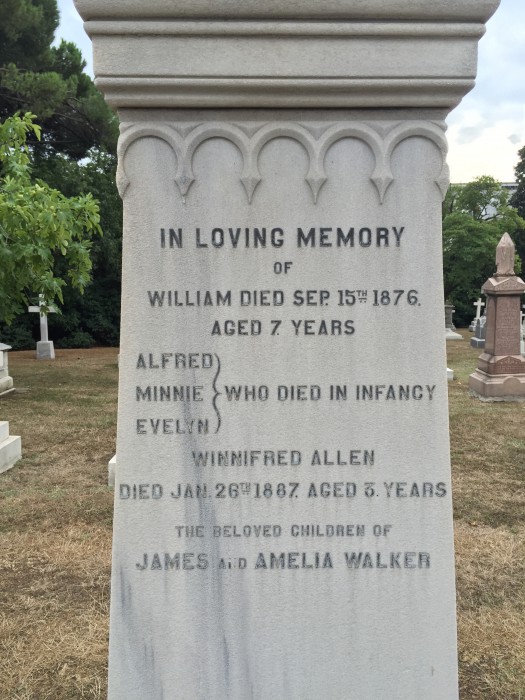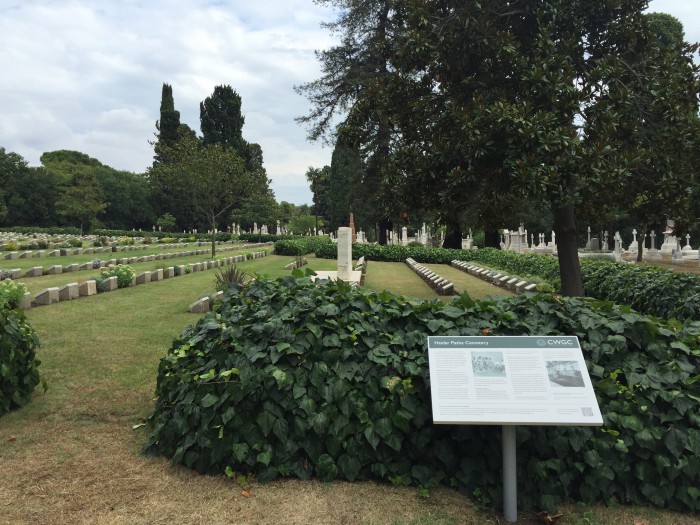10th September 2015
#AdiosIstanbul 1: a tragic, evocative place
The sun is hot between the shade-trees. In the distance, the sea sparkles. Memorials mark the resting place of 6,000 British soldiers who died at the nearby Scutari Barracks of injuries and illness during the Crimean War of 1854-56, most in unmarked graves; British and Indian soldiers of World Wars I and II; German Jaeger officers who fell during the Crimean War; French sailors; Levantine traders; a Polish leader of the 1863 January Uprising and his English wife; and many others.
This is Haydarpasa cemetery: my favourite quiet place in the tumultuous city of Istanbul.
The cemetery, overlooking the sea at Uskudar on the Asian side of Istanbul, has an eerie fascination. Yet it features in few tours or guide books. On a recent weekend visit in mid-August, I was the only visitor.
The cemetery was established during the Crimean War on land donated to British Government. It is a peaceful place, cared for like so many others around the world by the splendid Commonwealth War Graves Commission. But unlike most military cemeteries, Haydarpasa also contains memorials to more than 700 civilians – mostly British residents of Istanbul but including Russians, Hungarians and others who met their end in this ultimate entrepot city.
Sir Edward Barton was English Ambassador to the Sublime Port 1588-1596. He died in 1598 on the island of Heybeliada, where he had gone in an unsuccessful attempt to escape the plague raging through the city. His remains – and a gravestone featuring three stags’ heads close to the entrance to the cemetery – were later transferred here. Sir Nicholas O’Conor-Don, British Ambassador to the Ottoman Empire from 1898 – 1908, is commemorated by a chapel.
The cemetery also contains graves of the British Levantine community – such families as the Whittalls, La Fontaines and van Milligens who lived in what is now Moda in the 19th Century. One inscription records the death of:
“Julius van Milligen M.D… born the 19 July 1800, a graduate of the Edinburgh University he joined Lord Byron in Greece… settled in the East and served five successive Sultans as Court Physician…”
The “Haidar Pasha Memorial” commemorates:
“…the names of thirty officers and men… who died in the borderlands of Russia and Turkey in the latter days of the Great War and have no known grave”
I commend the intriguing and sometimes moving list of Haydarpasa Cemetery names and inscriptions, transcribed by Yolande Whittall. The military lists includes nurses, matrons and doctors who died at Scutari; as well as men of the “Dunsterforce” who died as far afield as Krasnodar, Batoumi, Tiflis (Tbilisi), Baku and Erivan (Yerevan).
For me, the quality of Haydarpasa is less the fascination of inscription-spotting or the magnificence of memorials such as the obelisk erected in 1857 by Queen Victoria and commemorating Florence Nightingale’s nursing service in the region. Rather, it is the poignant atmosphere of this calm, green corner of Istanbul, preserved amidst the pulsating chaos of Turkey’s 17-million strong metropolis.
I’ll be back.
Note: this is one of several blogs I plan to write about favourite spots and activities in my #AdiosIstanbul series. If you’d like to see more or have things you’d like me to write about, let me know.
Follow Leigh Turner on Twitter at @leighturnerFCO


Thank you. What a wonderful place to visit, full of history. Thank you